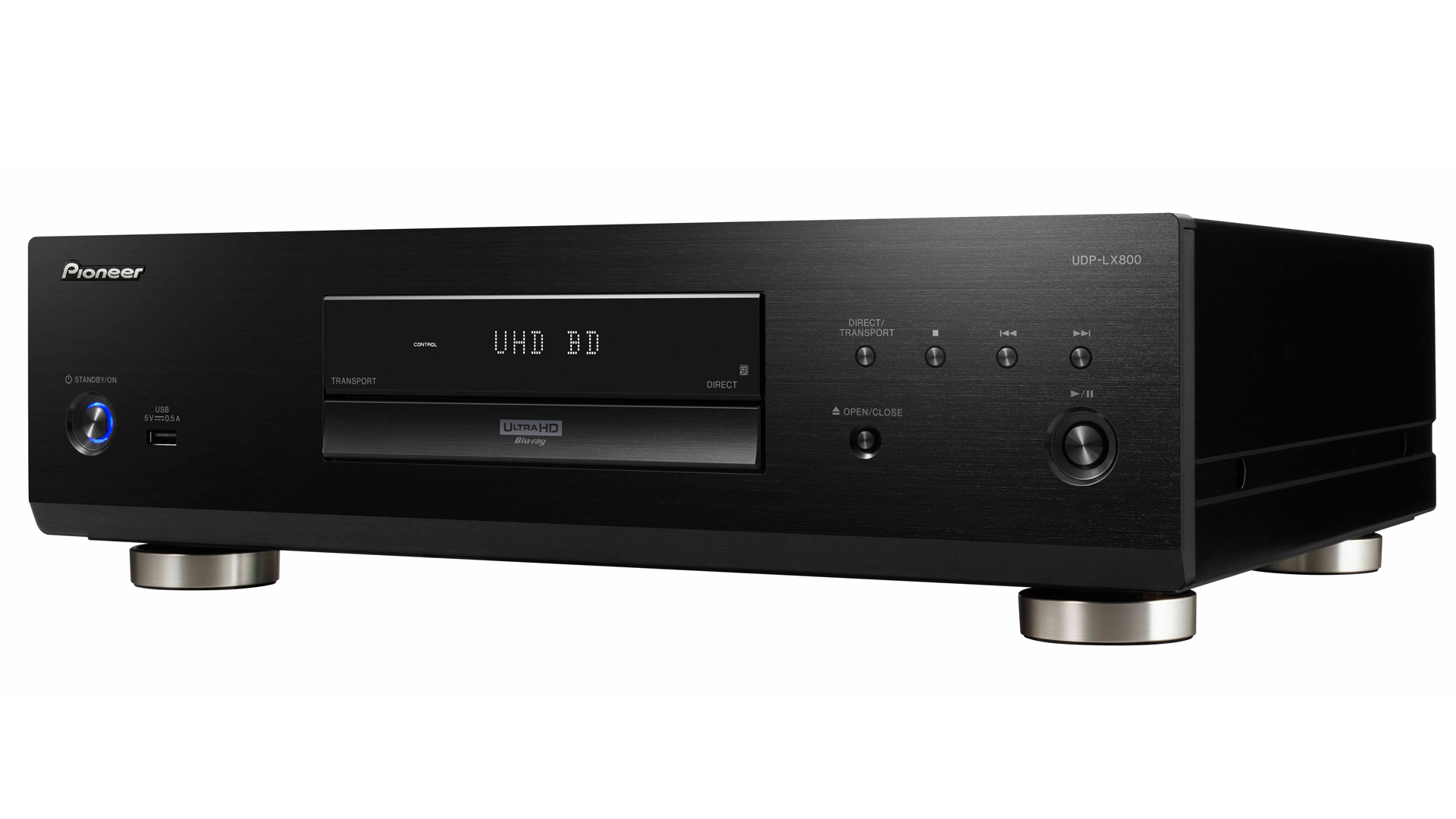TechRadar Verdict
Pioneer lays claim to the high-ground of the home theatre market with this movie machine. Hands down, it’s the finest 4K Blu-ray player on the planet - and, at £1,899 (AU$3,999, around $2,449), one of the most expensive, too.
Pros
- +
Superb picture performance
- +
Stupendous build quality
- +
Audiophile-grade music playback
Cons
- -
No streaming services on-board
- -
No multi-channel analogue audio
- -
Willfully expensive
Why you can trust TechRadar
While 2019 has only just begun, we might have already found the best 4K player of the year in the Pioneer UDP-LX800 - fabulously over-engineered and costing a staggering £1,899 (AU$3,999, around $2,449), it stands as a testament to Pioneer’s almost unreasonable pursuit of excellence.
This player is absolutely tailor-made to maximize the performance of 4K Blu-ray discs as well as regular Blu-rays, however it’s also compatible with SACD, DVD-A discs, and works wonders on good ol' CDs and DVDs, too.
Design
Modelled after Pioneer’s previous Blu-ray range-topper, the BDP-LX88, the UDP-LX800 uses extreme rigidity to dampen the high rotational speed of UHD discs.
With a 1mm thick steel plate top and noise deadening aluminium side panels to minimise vibration, build quality is stupendous - tipping the scales at 13.8kg, even a quake wouldn’t shift this puppy.
Connections include two HDMIs, plus optical and coaxial digital audio outputs, dedicated stereo phonos supported by a balanced stereo output for use with a compatible preamp, and USB ports front and back.
That second HDMI output can be left as a single source, separated, or designated Pure Audio but, unfortunately, there’s no multichannel audio output here like you'd find on the rival Panasonic DP-UB9000.
An Ethernet port provides a network connection, however the player doesn’t offer any OTT streaming services - a real shame considering the price.
The player comes with a backlit IR remote control, though, and there’s also RS-232C for control for those with a pro-cinema install.
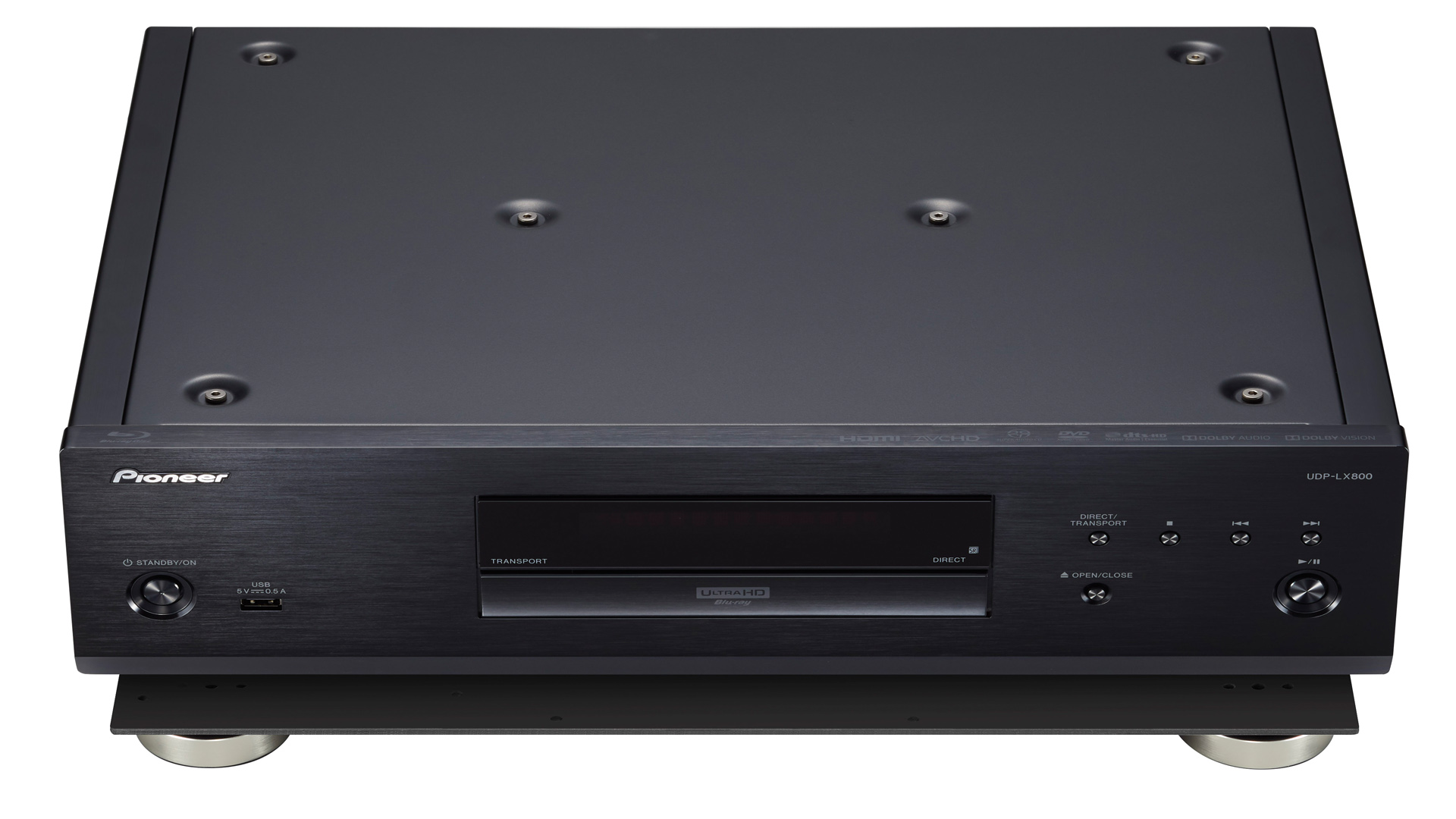
Features
Beneath the lid there’s just as much attention to detail: A three-block layout separates power supply, digital processing and analogue audio. The audio circuit uses a dedicated power transformer with custom-made capacitors and a six-layered circuit board guarantees minimum noise.
Yet for all this marvellous detail, the user interface is rudimentary. We're not quite sure what Pioneer is thinking here, but this UX could do with a serious overhaul - the only options are source selection and settings. The silver lining is that the former isn’t just for disc playback, it’ll also locate any compatible media servers.
Audio file compatibility will suit most downloaders, as it covers MP3, WMA, ALA, AIFF, WAV, FLAC up to 24-bit 192kHz and DSD 2.5MHz and 5.6MHz.
Despite this stripped back interface, there’s some level of output customisation, including four picture presets (Reference, OLED, LCD and projector), which can be used to optimise the HDMI output for different display technologies.
The player supports all three key HDR formats: Dolby Vision, regular HDR10 and HDR10+ (the latter coming via a firmware update).
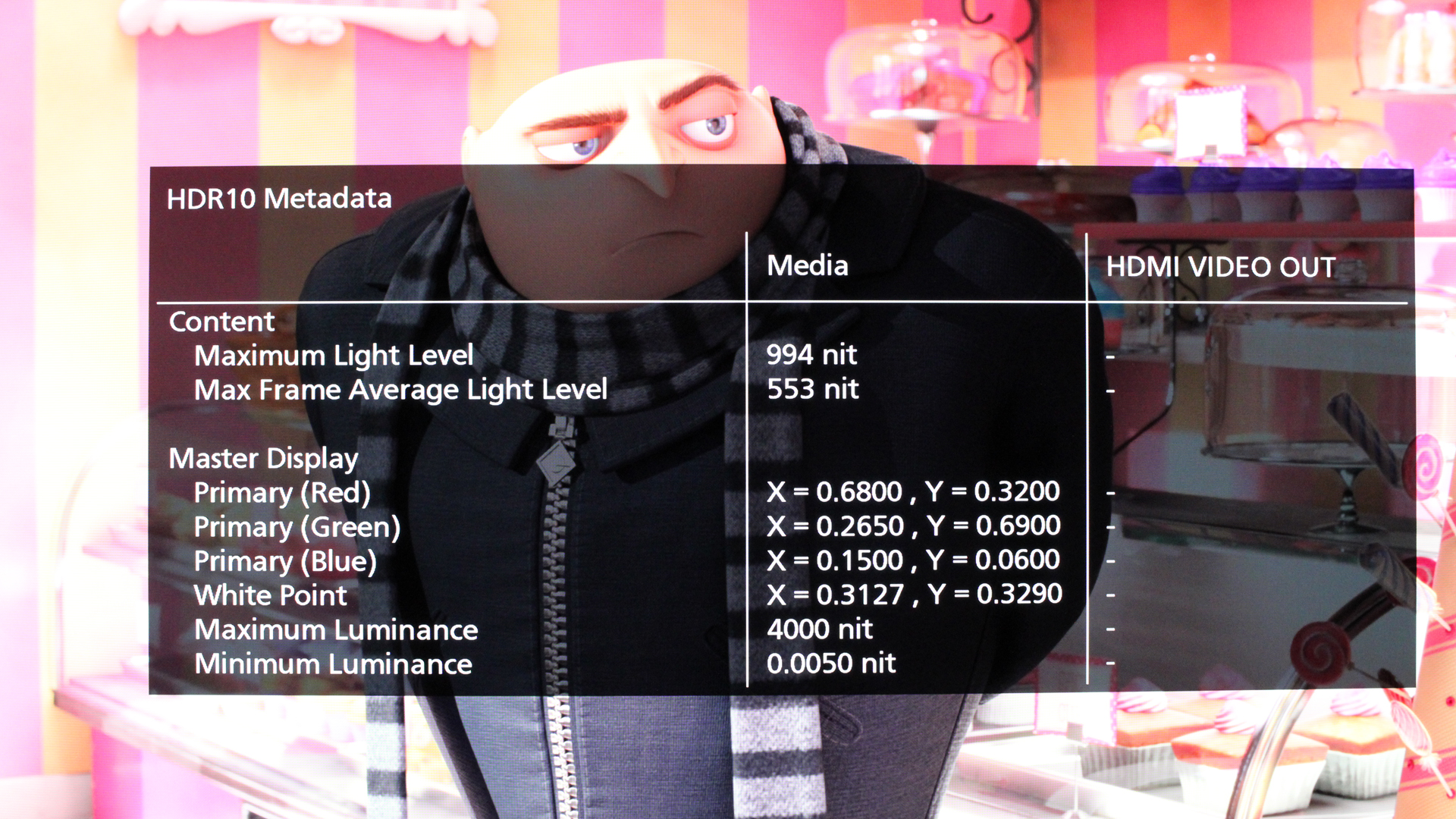
One of the UDP-LX800’s coolest tricks is the ability to display the HDR10 metadata on UHD Blu-rays. This display information reveals the Maximum Frame-Average Light (MaxFALL) and Maximum Light Level (MaxCLL) of 4K UHD discs. It provides a geeky insight into the mastering process, and provides you with a clue as to just how much tone mapping (if any) your UHD TV will need to perform.
True to Pioneer’s obtuse UI design though, all this delicious detail is only accessed by holding down the Display button for an extended period - a trick that's really not that intuitive even for us AV geeks.
Unfortunately, not all UHD Blu-rays divulge such valuable info, as regular Blu-ray discs only offer the resolution, frame rate, colour space and colour depth, as well as the audio format and a live bitrate meter.
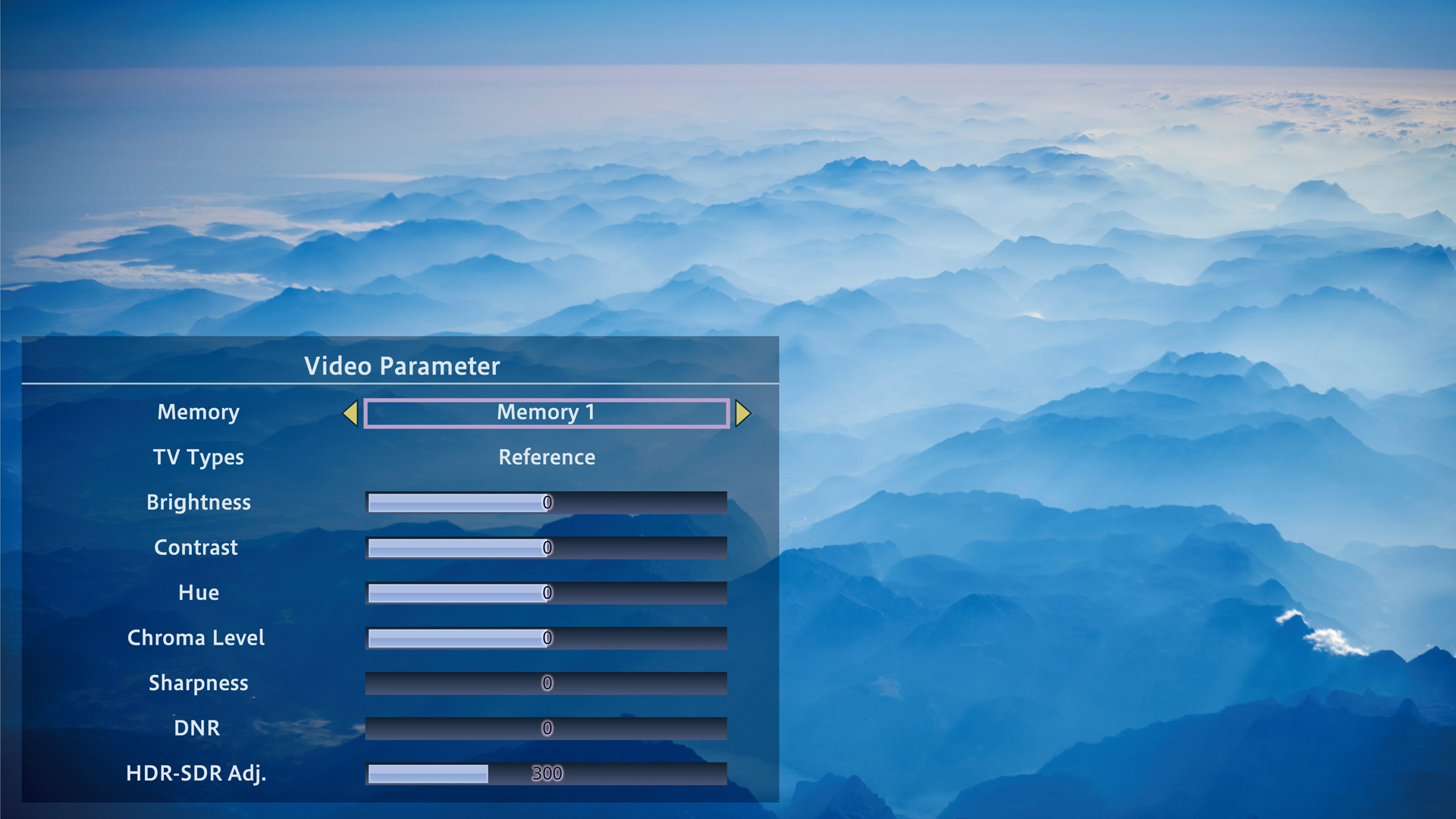
Performance
As a high-end home cinema source component, the UDP-LX800 is unequivocally thrilling despite, being whisper quiet. And despite barely making a noise the picture quality is superb. There’s an almost intangible solidity to its pictures.
That said, colour gradations are smooth and filmic, detail is deep and alluring; onscreen, its pictures are overwhelmingly cinematic.
On Dolby Vision titles like Despicable Me 2, the colour rendering is effortlessly smooth and rich, while sci-fi actioner Pacific Rim Uprising combines clean, detailed VFX with fabulous texture and skin detail.
The player does does a terrific job with standard Blu-ray discs too, offering the same theatrical stability. There’s no hint of splotchiness or blocking.
The deck offers gloriously immersive 3D audio too. Hans Zimmer Live in Prague (Blu-ray), not only captures the ambiance of the live venue, but places instruments with spatial precision. Zimmer’s opening interpretation of Driving Miss Daisy is delivered with euphoric lightness.
Multichannel music proves equally infectious. Enrique Iglesias’ Dolby Atmos cut of Bailando had everyone in my home theatre bouncing in their seats.
And with pure audio discs, this deck really stands out. All that meticulous attention to component detail pays off handsomely when vision gives way to sound.
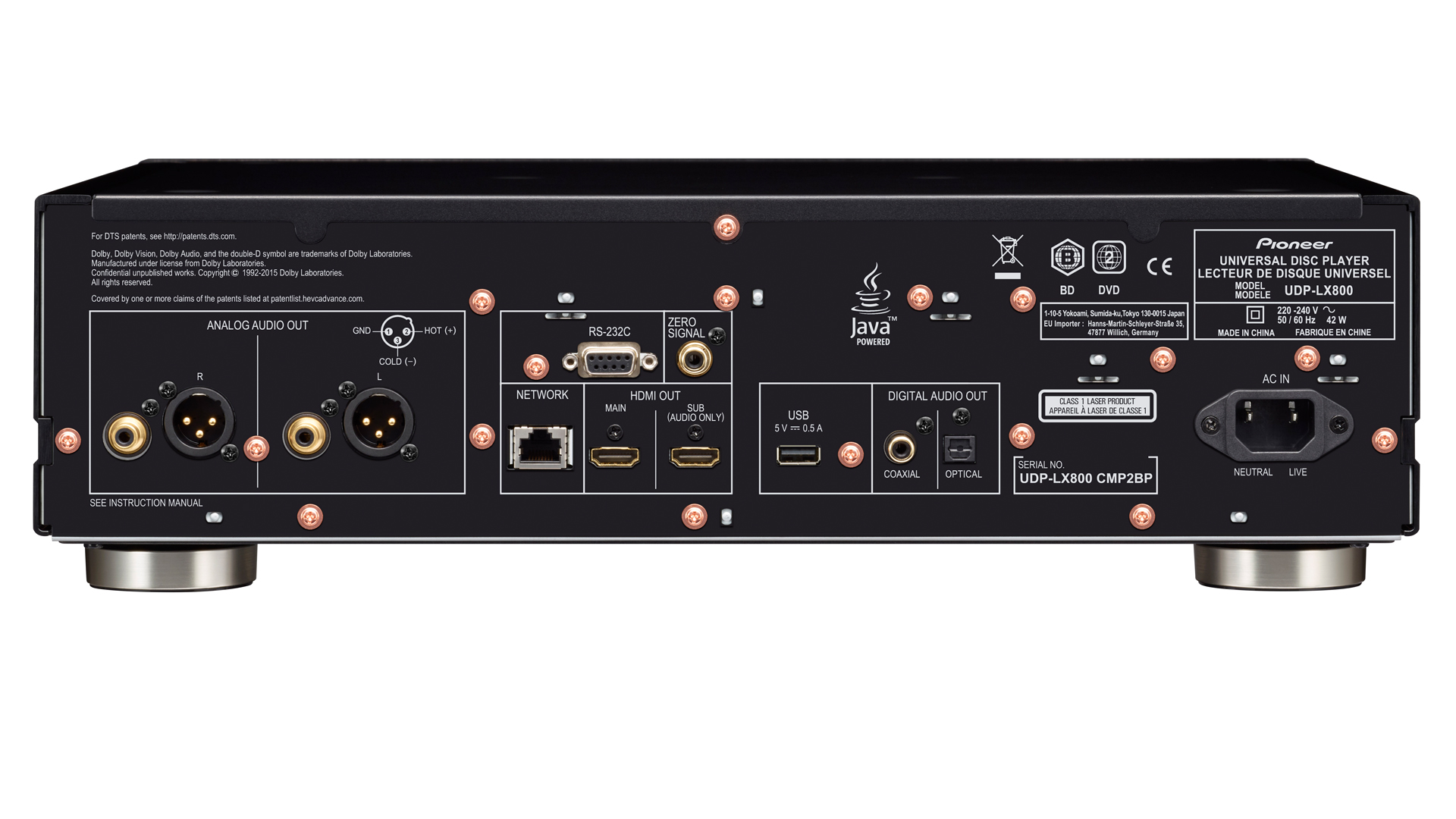
When using the analogue output, you can select one of three DSP filters to fine tune audio to your liking - Sharp, Short and Slow (via the Audio Parameter menu) - making two channel DSD file playback positively epic. There’s also a purist Direct function which shuts down the deck’s digital audio and video circuits completely.
Of course, even better is the fact that you don't need High-Res sources to hear what we're talking about - the deck does a remarkable job with run of the mill CDs and both SACDs and legacy DVD-A discs are a treat, too.
Final verdict
The UDP-LX800 comfortably combines audiophile performance with state-of-the-art video processing. It’s ridiculously expensive, to be sure, but it’s also one of a kind amongst the current crop of Blu-ray player options.
...that's not to say it's without competition, however.
Panasonic’s DP-UB9000 is considerably cheaper and has comparable video chops, however, it's nowhere near the audio player that the UDP-LX800 is. Pioneer’s sibling UDP-LX500 is no slouch either in that department, but if you want the best home cinema disc player available, the UDP-LX800 is it.
There’s simply nothing to rival it.
- These are the best 4K Blu-ray players in 2019
Steve has been writing about AV and home cinema since the dawn of time, or more accurately, since the glory days of VHS and Betamax. He has strong opinions on the latest TV technology, Hi-Fi and Blu-ray/media players, and likes nothing better than to crank up his ludicrously powerful home theatre system to binge-watch TV shows.
